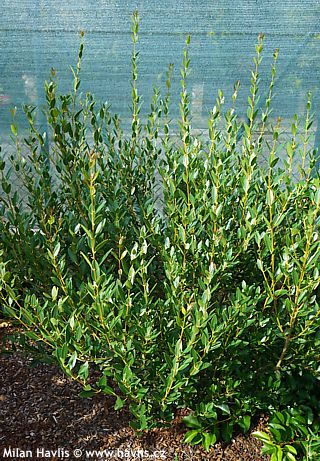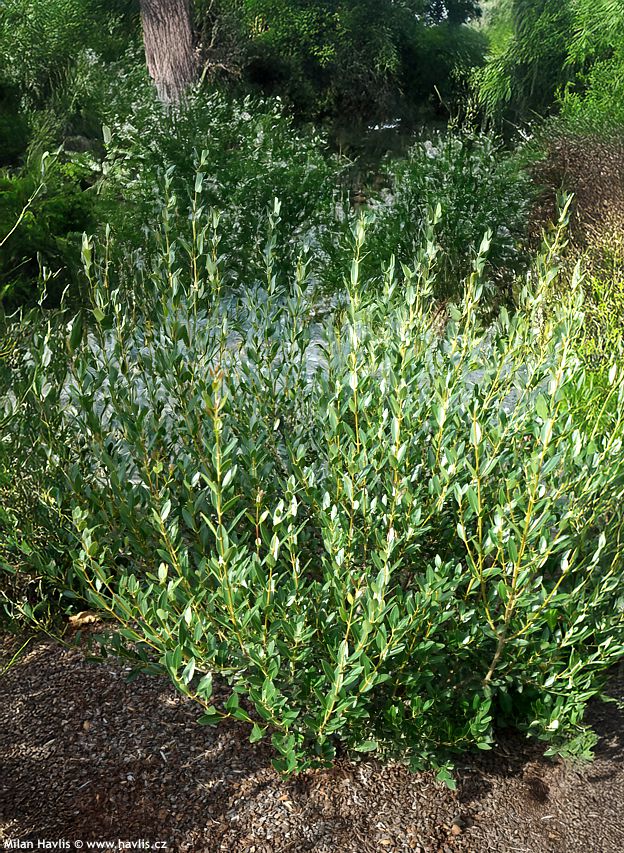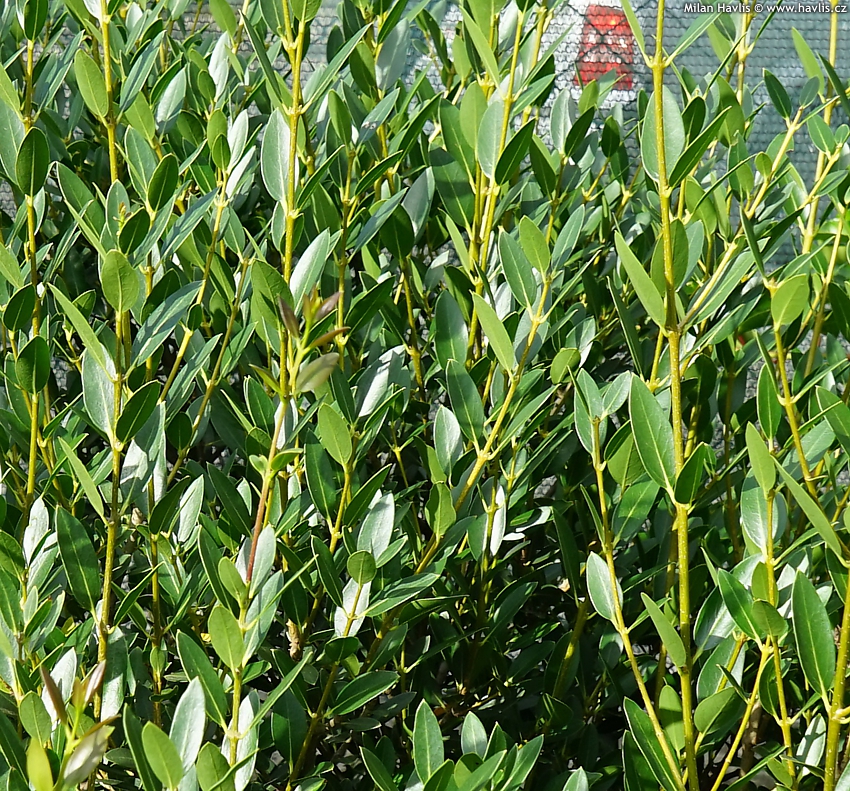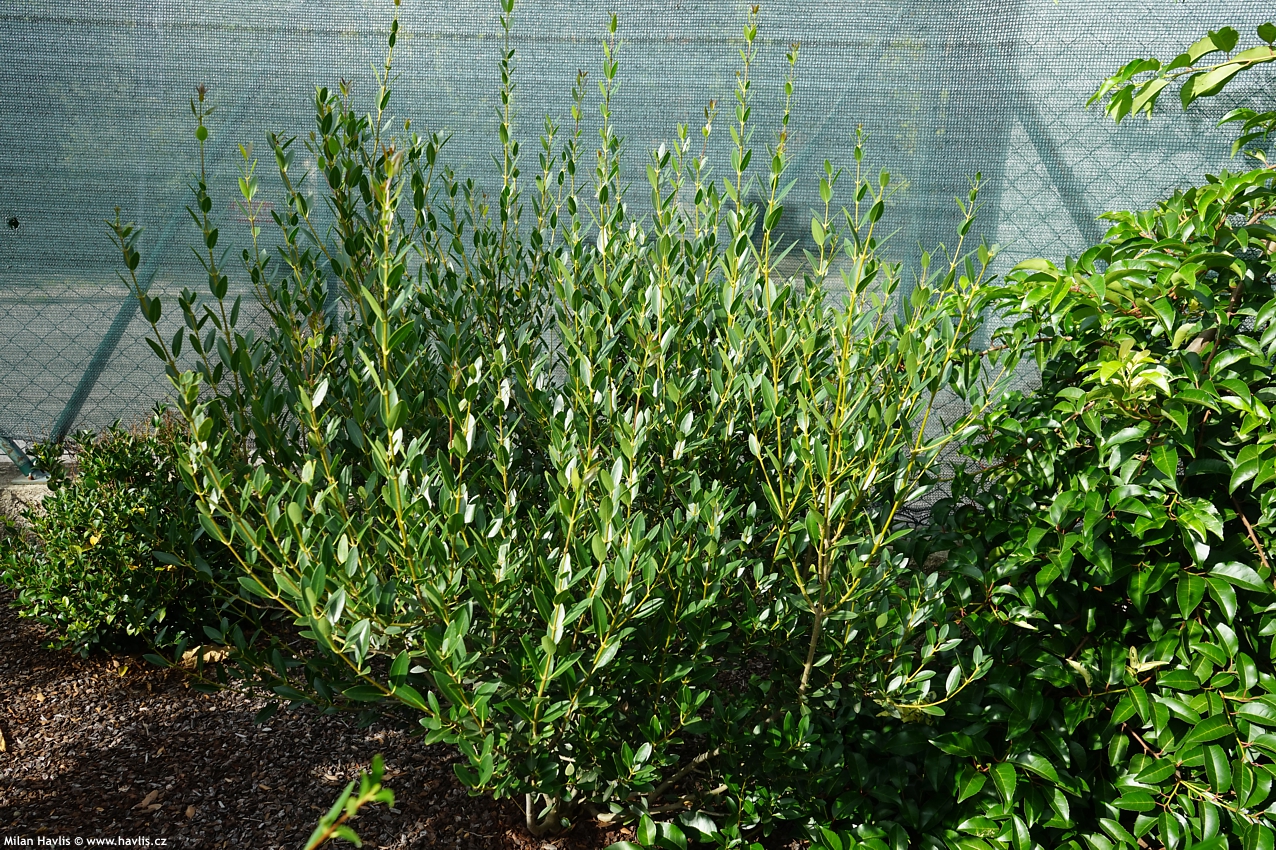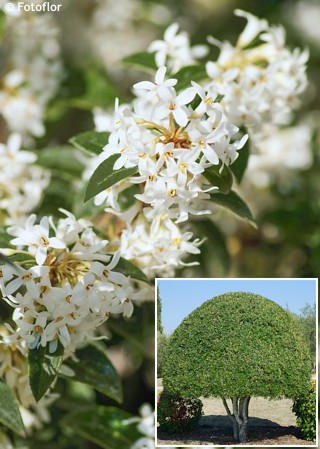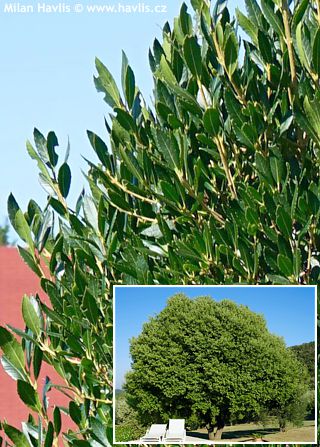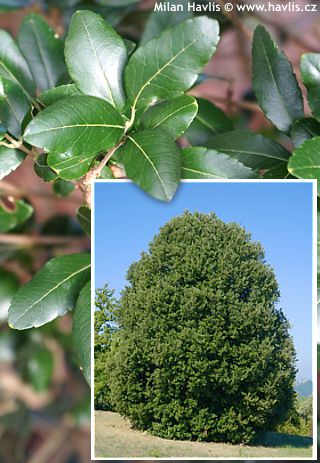Phillyrea angustifolia narrow-leaved mock privet
Phillyrea
Mock privet is an evergreen shrub or small tree from the olive family which we have been trialling in our C.E. continental climate. We have noticed that in the changing climate many plants from this family are exceptionally suited for milder parts of our country. Sufficient hardiness is an important feature, however, current lack of water in the ground and less rain make drought-tolerant plants like this one a desirable species even here.
Narrow-leaved mock privet is another typical plant of so-called macchia vegetation found in dry and hot, rocky slopes of South Europe, i.e. plants which cope extremely well with long-lasting drought and are usually unattacked by wild animals. This mock privet has narrowly elliptic to lance-shaped, 4-6 cm long, leathery, and partially glossy, evergreen leaves with entire margins. In mid or late spring appears a profusion if tiny, insignificant, creamy white flowers followed by small, blue-black, spherical fruit.
Its fluffy habit resembles plants growing at sea dunes near the shore which are constantly blown around by wind. Its fine and delicate leaves bring a gentle touch to a border with shrubs with broader foliage. It grows rather fast into an upright, well-branched, chubby bush that is often clipped to remain smaller or shaped to topiary where a second trimming is required in midsummer. Use it as a beautiful small specimen tree in a Mediterranean-style landscape.
Grow it in extremely well-drained, humus rich soil in full sun or only very light shade. Acidic soil enhances the depth of green colour in leaves but is not essential. Just avoid compacted or water-logged ground where the roots may rot. It will need even moisture after transplanting but once established stay away from watering. It is pest and disease free, and so far hardy to USDA zone 6 – short spells of -24°C. Choose older plants for growing in zone 6 and provide good mulch for winter.
Last update 07-03-2021

578 Kè
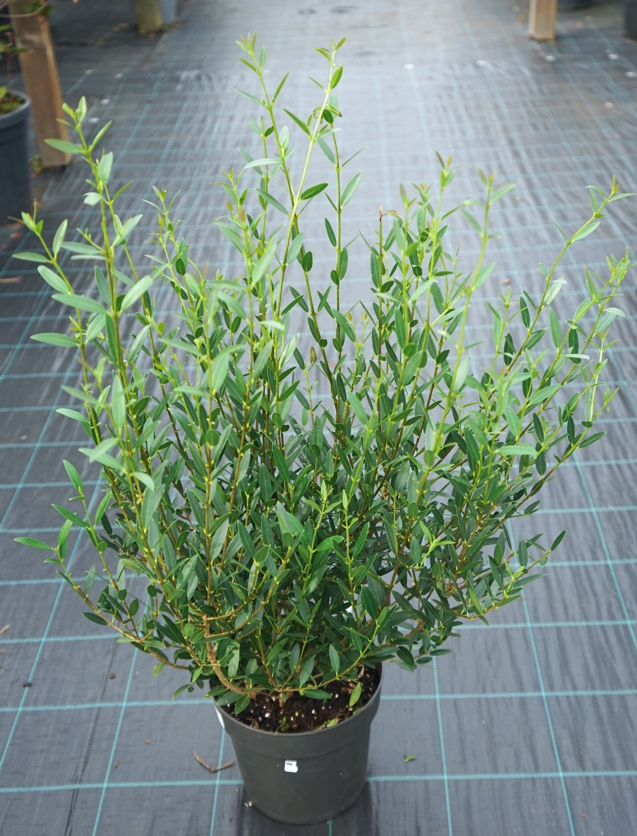
807,5 Kè
Goods are shipped all over Europe. For Russia and U.K. and for further details please read about SHIPPING OPTIONS HERE.
Are you interested in a serious discount for orders NOV-FEB? Check your options here.
THE PRICES INCLUDE VAT of 15%. For quick conversion you can use 1 CZK = approx. 0.04 EUR
- STANDARD QUALITY - Plants of this group are 1st class quality with number of branches and overall density adequate to their size and age, considering they were container grown.
- DE LUXE QUALITY - This label guarantees a luxurious quality of manually selected plants that, compared to their height and age, are exceptionally dense and beautiful.
- EXTRA - These plants are usually mature and bigger specimens with exceptional overall appearance.
- STANDARD (as described in the plant form) means a tree with a trunk of 190-210 cm and a crown at the top, unless specified differently. The commercial size for trees is their girth measured in the height of 1m from ground.
- HOBBY - These plants are of the same quality as our standard-quality plants but younger and therefore cheaper.
- SHRUB - a woody plant with branches growing bushy from the ground level.
- HALF-STANDARD or MINI-STANDARD - a small tree with shorter trunk, its size is usually specified.
- FEATHERED - These are trees with branches growing already from the base of the trunk and up along the stem.
- GRASSES and PERENNIALS - Sizes given usually read the diameter of the pot or the clump, as specified.

































